-OR-
I Want to Foam Roll All Night (And Roll Out Every Day)
Introduction
Now that there are more foam rollers out there than there are political opinions, it can be difficult to determine which one (or ones?) are right for you. We’ve rounded up some of our favorites (and some of our least favorites) to give you some advice on what you should look for in and what you should try and avoid when picking out your foam roller(s).
THERE ARE MANY OPTIONS OUT THERE, BUT DON’T GET BOGGED DOWN BY THE DECISION!
We’re Here to Help you Choose…
The Cliff’s Notes Version
If you don’t care why, and you just want to know what foam roller to buy here is a quick run down of our top 3. We go more into detail later on about why these 3 are the best, and a list of others that are suboptimal:
1st PLACE: The Vyper Vibrating Foam Roller
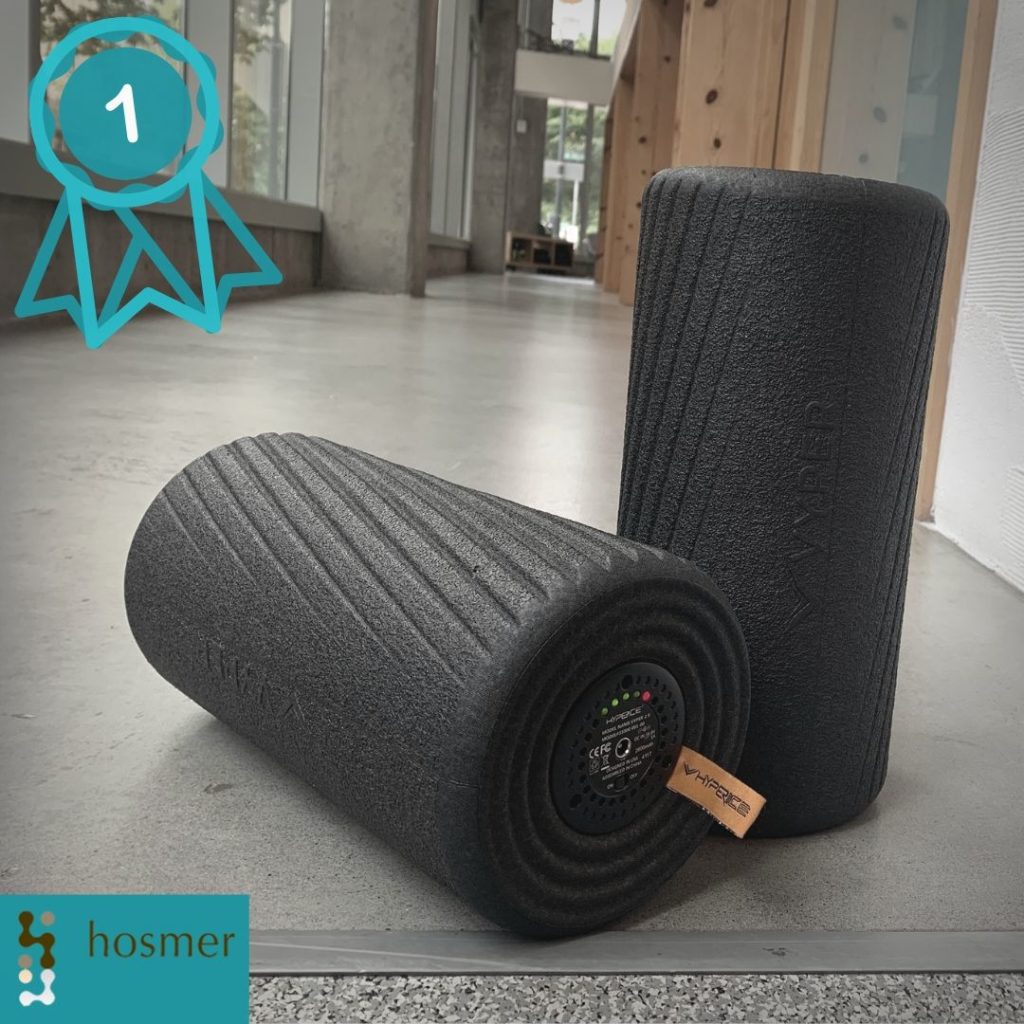
PROS: Excellent for joint foam rolling, and everything else. The vibrations reduce the time needed to do any mobilization, and also make it less painful. It’s durable. We have been using the most recent version (2.0) frequently in the clinic for 2 years now, and they show no signs of wearing down, breaking down, or lack of ability to hold a charge.
CONS: The price. Coming in at $200, it can be a bit spendy. However, the money you may save on massages and treatment could easily pay for itself.
HOSMER APPROVED? Heck to the yes we approved this! it’s our #1 choice of foam roller.
2nd PLACE: The M80
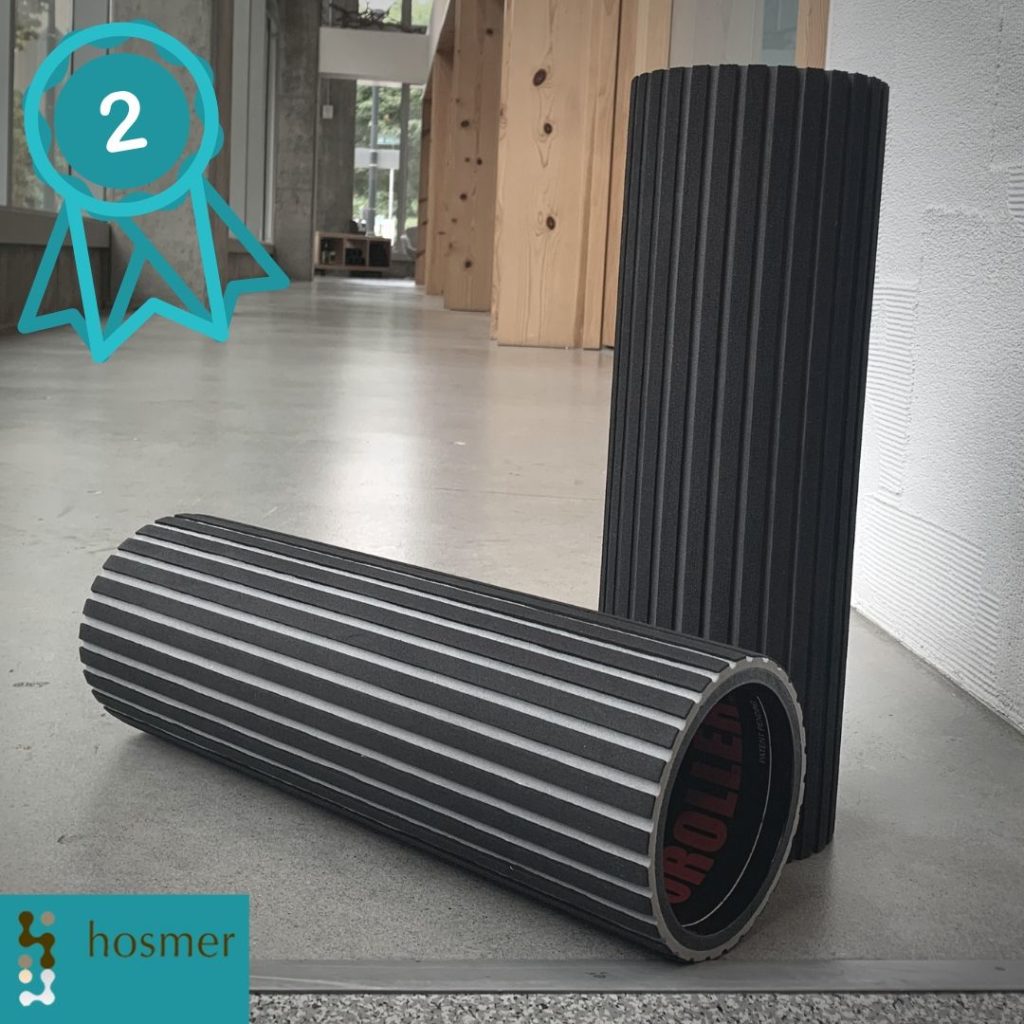
PROS: Great for joint mobilizations. Sturdy, very firm, will be able to hand this down to your grandchildren.
CONS: may be too firm for newbies.
HOSMER APPROVED? Absolutely! Until the Vyper came along, this was our favorite.
3rd Place: THE GRID X from TriggerPoint Performance
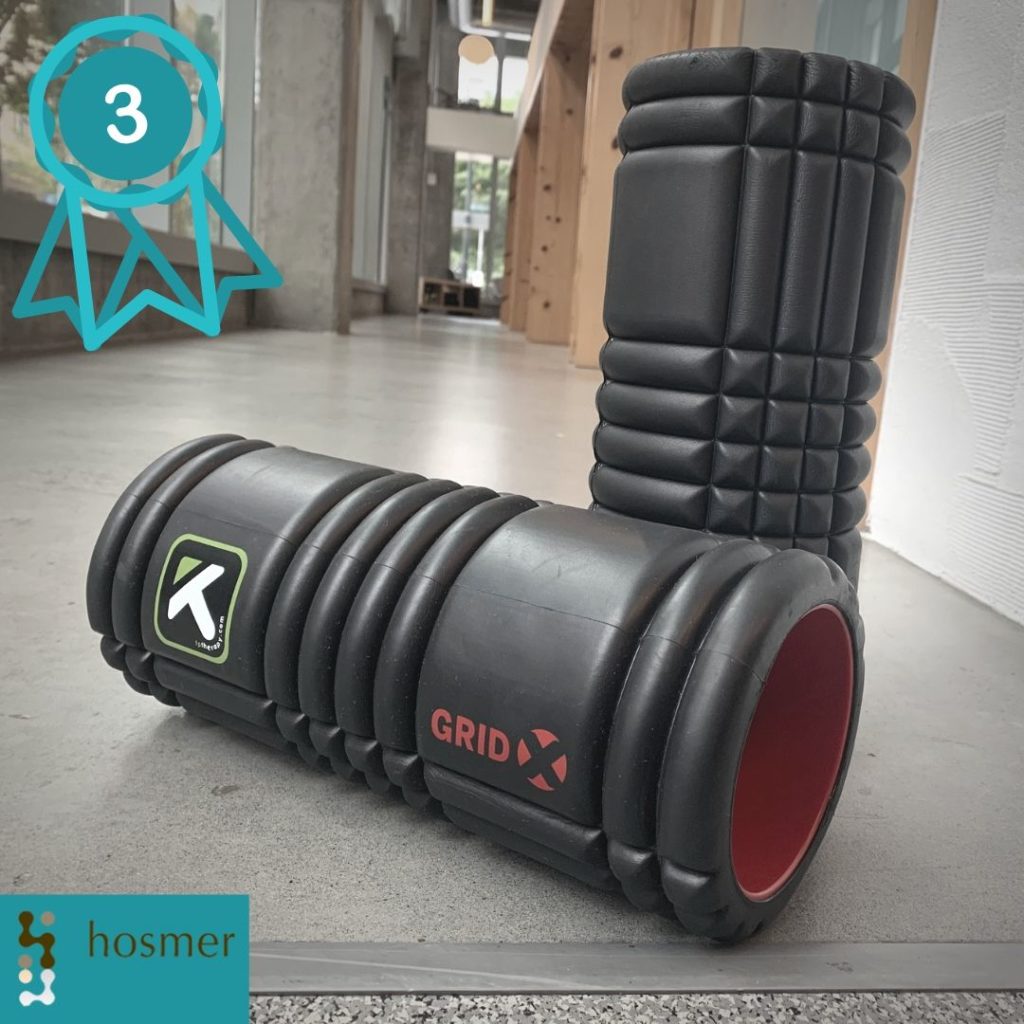
PROS: Not as brutal as the M80, but should be able to provide good joint mobilization.
CONS: Still dense enough to be too hard for some newcomers, or persons with sensitive muscles/injuries. Some people may need a firmer foam roller for joint mobilization, particularly SI joints.
HOSMER APPROVED? Yes.
WHY THE HECK DO WE FOAM ROLL ANYWAY?
To keep this simple and latin free (almost) , we foam roll to:
- Relax sore and stiff muscles (e.g. tight calves or thighs) and/or
- Mobilize stuck joints (Sacroiliac [SI] joints or the thoracic spine/upper back)
HOW DOES ONE FOAM ROLL?
If you ever want to see exercise specialists, physical therapists, or massage therapists get into a huge brawl, ask this question while in a group with them. There are many different opinions on how to do this. What we at Hosmer Chiropractic Health advise is the following approach:
- Place a foam roller under a sore muscle.
- Slowly roll the foam roller (think an inch-per-second) back and forth over a muscle, paying attention to tender spots along the muscles.
- After you have located the biggest trigger point, STAY PERFECTLY STILL ON THAT SPOT. Give the tenderness a number between 0-10, 0 being nothing and 10 being stub-your toe-on-the-edge-of-the-banister pain.
- Whatever that pain level is, we want it to decrease by AT LEAST a ⅓ or 30% before we move onto another spot. Quicky math lesson: if your pain is a 9/10, stay on the spot until it goes down to a 6/10. IF it’s a 6/10, stay on it until it goes down to a 4/10, etc. Try to be exact, but don’t feel like you have to break out a calculator to figure this out. It should be a noticeable decrease.
- This should take 20-30 seconds for the spot to release, but if it is really seized up, it may take longer. Don’t spend time on a spot that doesn’t give after you’ve been on it for a minute. Sometimes if you release a spot a little higher or a little lower it will cause that stubborn trigger point to release. However, there is also a chance you might be on a nerve, which is never a good idea. You can’t foam roll a nerve away. That brings up another point: When you are foam rolling, The tenderness should be where the roller is located, and it should never feel like burning, tingling, or an ”electrical” sensation (these are all signs that you are irritating a nerve).
GOLDILOCKS AND THE FOAM ROLLERS
Much like Goldilocks search for the perfect bed, we want to find a foam roller that isn’t too soft or too hard, but just right (we just don’t want to break into an innocent family’s house to determine this.) But that perfect foam roller will vary from person to person, and also from what the intended purpose is. For example, a person is going to need a very firm foam roller for a SI mobilization, but might need a softer foam roller for when rolling out their lateral thigh/IT band region. Also, the first foam roller you got might have felt very intense and was great at getting some superficial trigger points, but now you may need something firmer to get the deeper knots that lie below. On the flip side, a person who has never foam rolled before could feel worse if they roll out with a very hard foam roller.
Yes, We Are Biased.
Yes, we are hell bent for leather when it comes to making sure your joints are working properly. One of the many reasons why we like (certain) firm foam rollers is that they can be an excellent tool to mobilize a locked up SI joint or your thoracic spine. So you may notice we are biased to foam rollers that are firm and can mobilize these often troublesome joints. However, many of the traits that make for a great joint foam roller tool also make for an overall great foam roller, so it’s win-win!
Criteria for a good foam roller:
- It should maintain its shape
- Should be roughly 4½ inches in diameter.
- It should be firm enough to provide release for sore muscles and some specific joints, but not so hard that you can pave a road with it.
Now, there are some specialty rollers that do not fall into our category as a “good” foam roller. Does that mean your blue MELT method foam roller is worthless? Absolutely not. It is designed for a very specific treatment (the MELT Method). I have done MELT in the past, and found that it was awesome. However, for what we are trying to achieve, we would not recommend that roller. So without further ado, here is a review of some often used foam rollers, and our ranking of them. We have listed them from softest to hardest, but that is not necessarily in order of approval, so we have also listed their ranking #.
SOFT
THE ORIGINAL WHITE FOAM ROLLER (6th/last place)
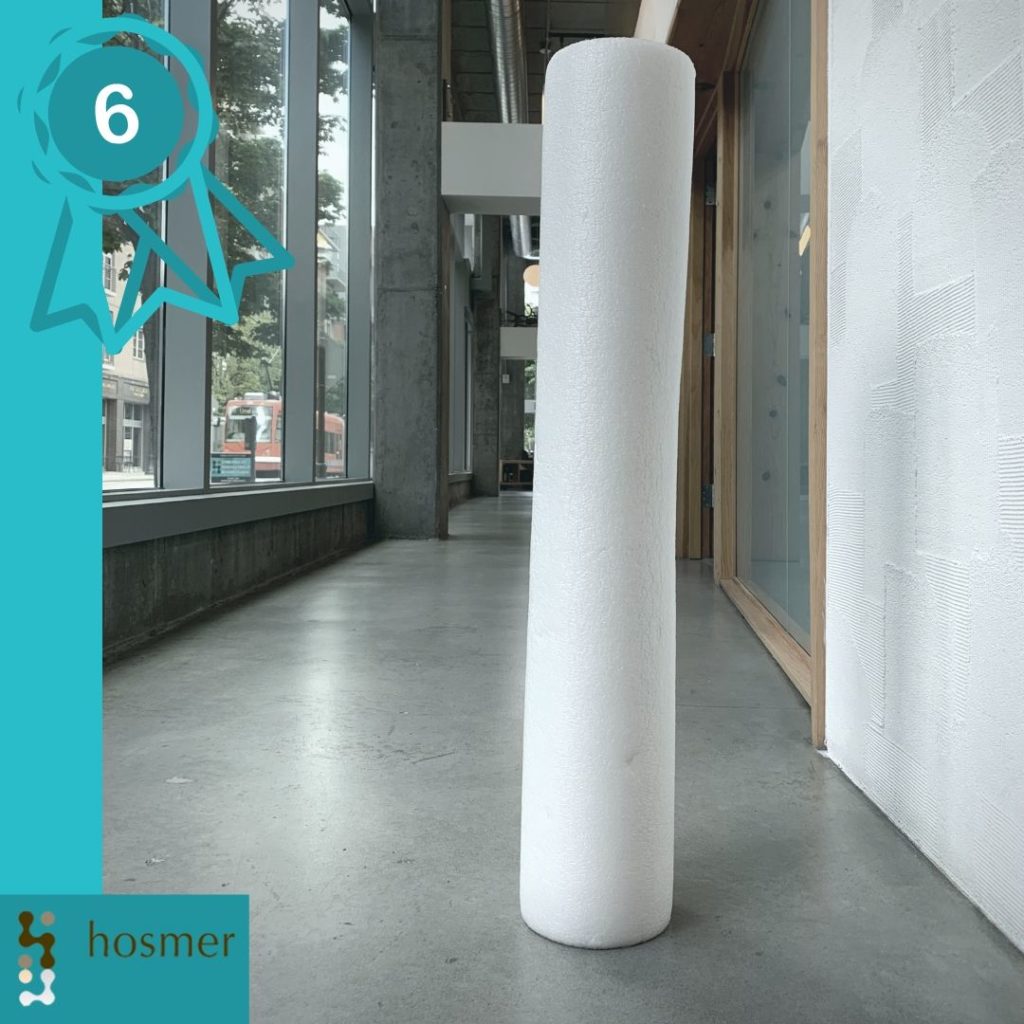
These are the best foam rollers ever! …if it was 2001. Womp womp.
Don’t get me wrong. You can still listen to “No More Drama” by Mary J Blidge and keep watching FRIENDS (but should you?). However, let’s update your foam roller. Here is why we are not crazy about these foam rollers, but I will also talk about where they might have a roll (get it? “Roll”?) in relaxing your muscles.
Biggest problem? THEY ARE TOO SOFT. We want a foam roller that will keep its shape, and those white pool noodle foam rollers give too much:
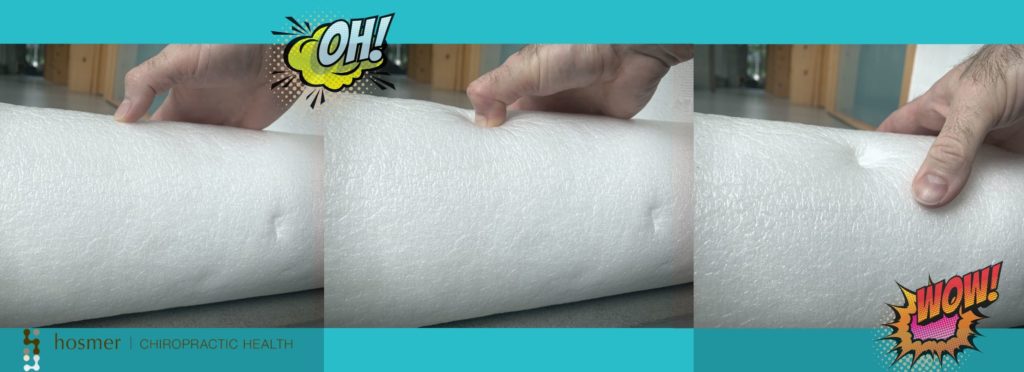
See what my thumb did there? If you are trying to mobilize your SI joint on one of these, you won’t. That stuck joint will make a cozy little nest for itself in this marshmallow cylinder, thus preventing that stuck joint from getting mobilized. Also if you are trying to release a locked up muscle, it may not provide enough pressure for it to release.
When would these soft rollers be a good idea? If you have never foam rolled before it might be a nice introduction. Also, for people with overactive nerve dysfunctions (such as fibromyalgia) or poor circulation, this might be the right fit for you.
PROS: inexpensive. Very soft, so could be good for people with overactive nerve issues (fibromyalgia) overly sensitive muscle conditions.
CONS: softness will prevent the ability of this to scan/adjust SI joints, or give a release to to tight muscles
HOSMER APPROVED? No, unless you have very specific conditions.
FIRM
4th Place (Traditional) TriggerPoint Therapy Foam Rollers
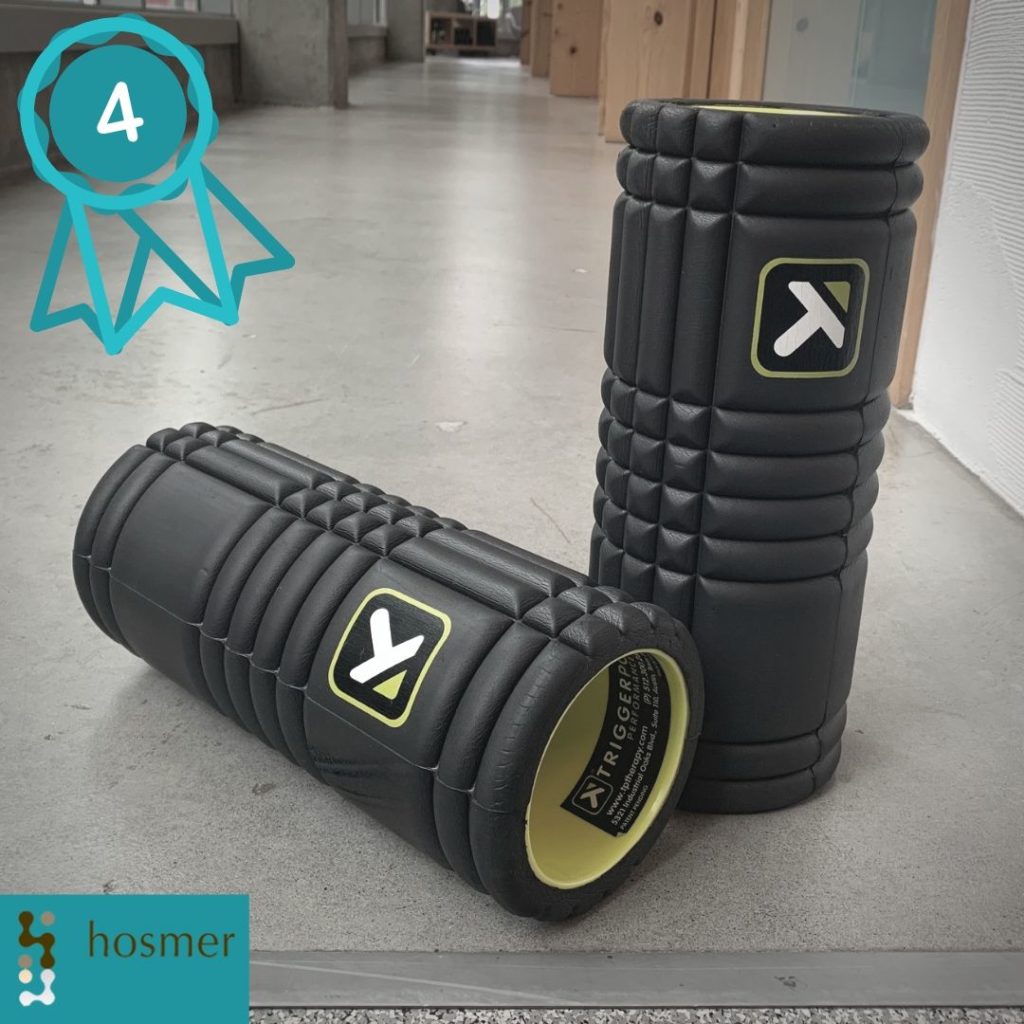
These are probably the most popular foam rollers we have at Hosmer Chiropractic health. They have a hard plastic inner cylinder like the GRID-X and the M80, but the outside cushion has more give than either of these. This is a blessing and (a little bit) of a curse at the same time; the softer cushion is very forgiving on tender muscles, and may be great as a person’s first foam roller. However, it can be difficult to determine which SI joint is tight when scanning. Still, it is a pretty great foam roller that will last for years.
PROS: maintains its shape, gentle enough for most beginners
CONS: may be too soft for SI scanning/mobilizations, and may lose its effectiveness for deeper muscle release
HOSMER APPROVED? Yes, but we would generally recommend the M80 over this if you can tolerate it.
THE BRIDGE BETWEEN VERY FIRM AND FIRM:
The 3rd Place: THE GRID X FROM TRIGGERPOINT PERFORMANCE
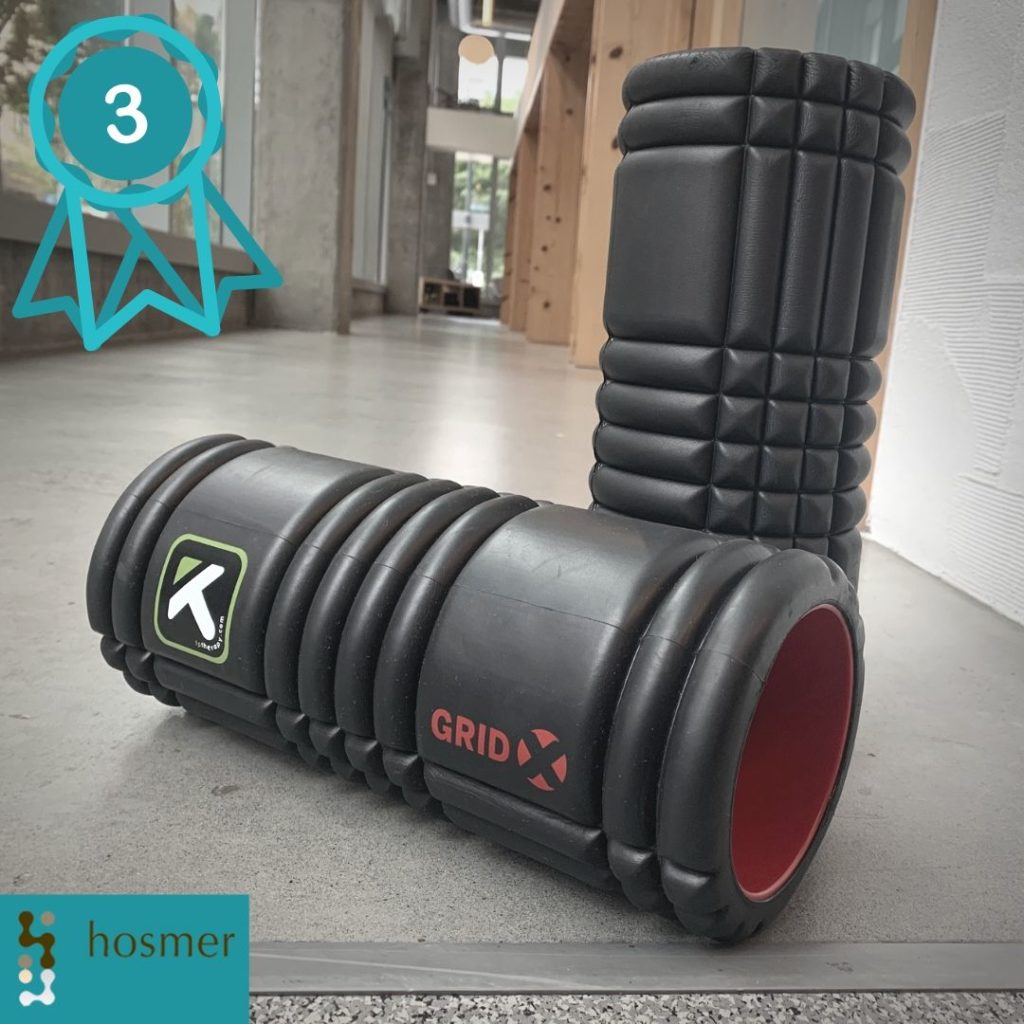
The GRID X from TriggerPoint Performance is the hardest foam roller this company provides. It’s set apart from other foam rollers by TriggerPoint by it’s cautionary red inner cylinder. However, it’s not as hard as the M80. You could probably get a good SI mobilization, but it won’t provide the same clear feedback as the Vyper or the M80. However, it will be easier to tolerate on sore muscles, or on your upper back.
PROS: Not as brutal as the M80, but should be able to provide good joint mobilization.
CONS: Still dense enough to be too hard for some newcomers, or persons with sensitive muscles/injuries. Some people may need a firmer foam roller for joint mobilization, particularly SI joints.
HOSMER APPROVED? Yes.
HARD/VERY FIRM
2nd Place: The M80
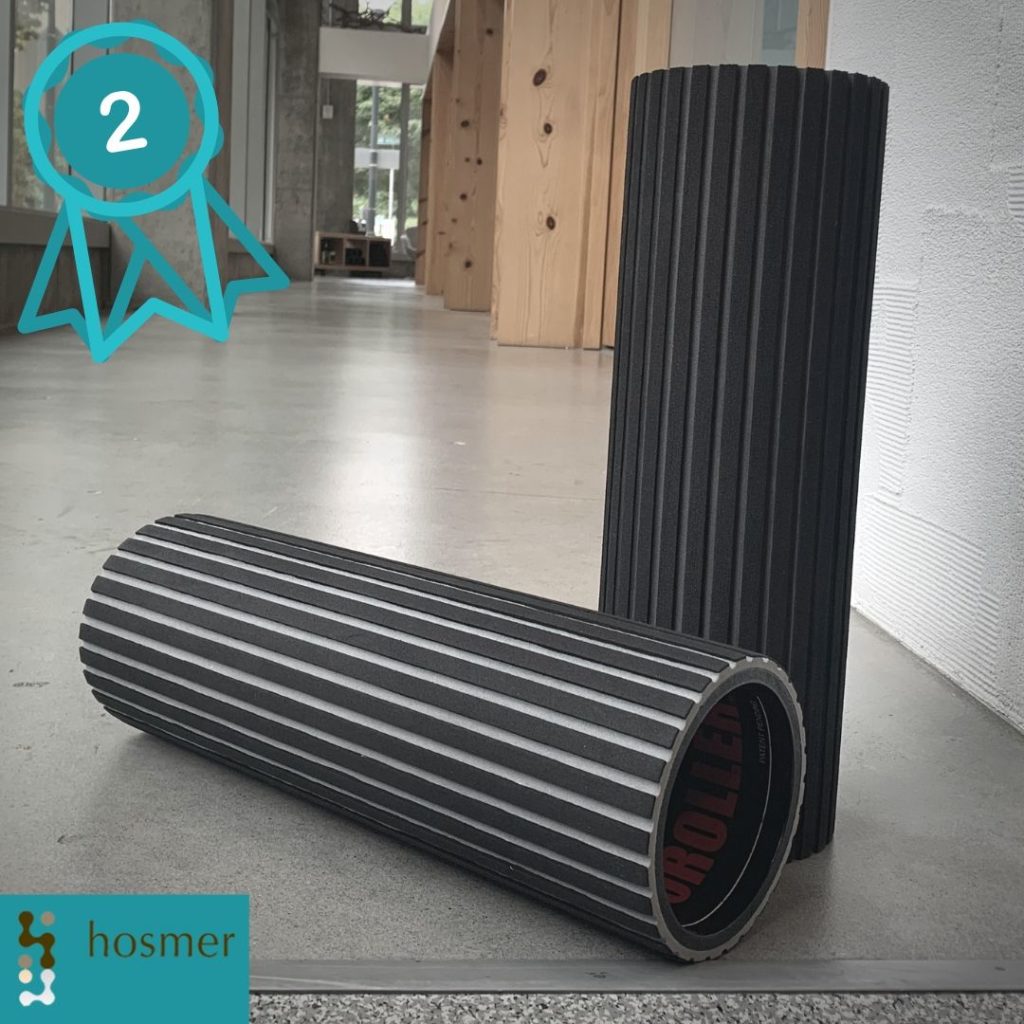
It’s hard! It’s hard core! And not like Justin Bieber trying to act all hard, growing a weak, Shaggy from Scooby-Doo mustache. I’m talking like old school Ice-T hard. The lined grip on the M80 is thin and lean. It’s sturdy, and it will last you until the end of days. If you are on the fence about this being too hard for you, here is a cool trick: put a blanket on top of it initially. Then, when it feels less effective to use it with a blanket, you can remove it and use the roller. Viola! Who knew being hard core was so easy?
PROS: Great for joint mobilizations. Sturdy, very firm, will be able to hand this down to your grandchildren.
CONS: may be too firm for newbies.
HOSMER APPROVED? Absolutely! Until the Vyper came along, this was our favorite.
THE DARK HORSE:
THE BLACK COMPOSITE FOAM ROLLER (5th place)
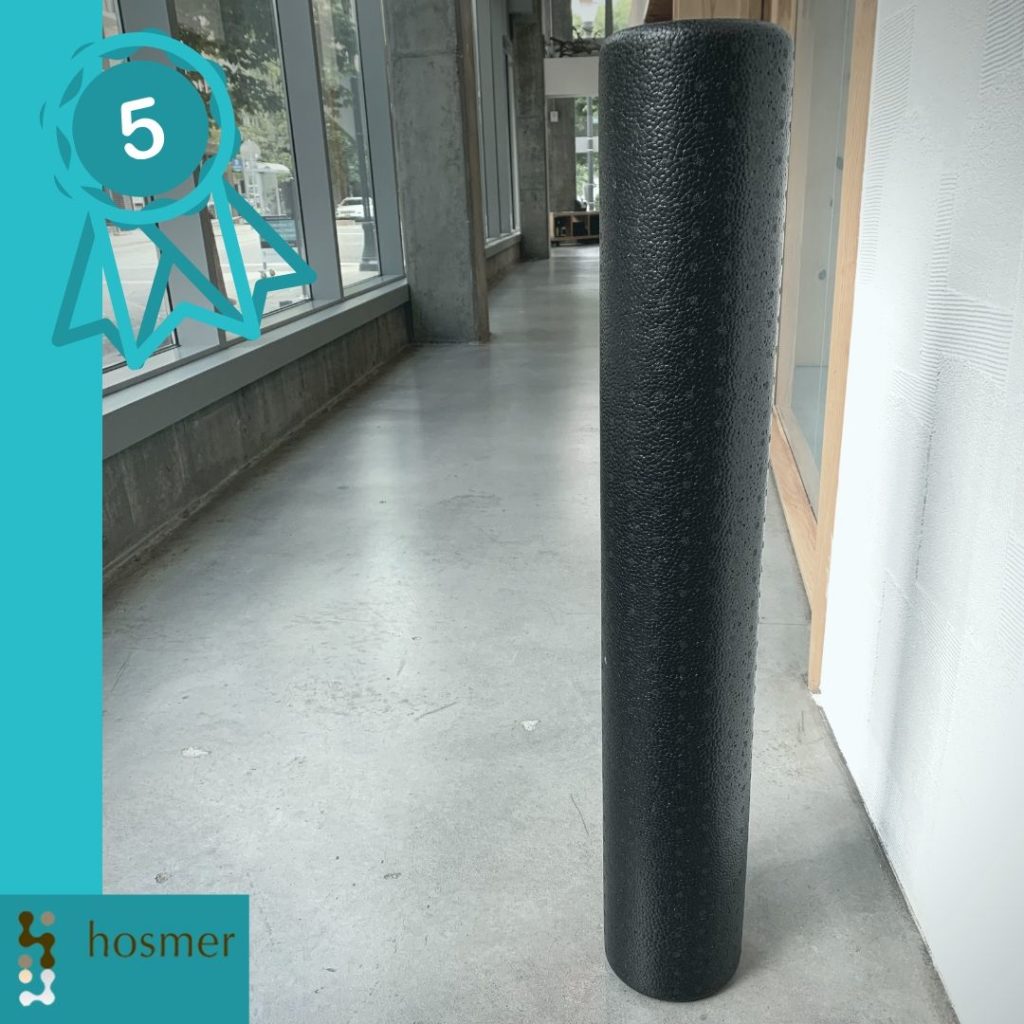
So, this one is the hardest foam roller. . .to classify. Brand new, it can be as firm as an M80, but in a month or so, maybe not so much. Also, there are SEVERAL companies that make versions of this, and some of them are much softer than others, so you may even start with a much softer foam roller than you thought. In addition, they can start to crumble over time. We have trouble recommending this because they don’t hold their shape, and the quality control on making these can be…not so quality.
PROS: inexpensive, lightweight, could provide some thoracic, rib, and Si joint mobilization initially.
CONS: Will lose firmness overtime, becoming less dependent for mobilizations, and eventually less effective for muscle release.
HOSMER APPROVED: …Eh. Not really.
The HYPERICE VYPER VIBRATING FOAM ROLLER (1st place + HCH’s preferred choice!)
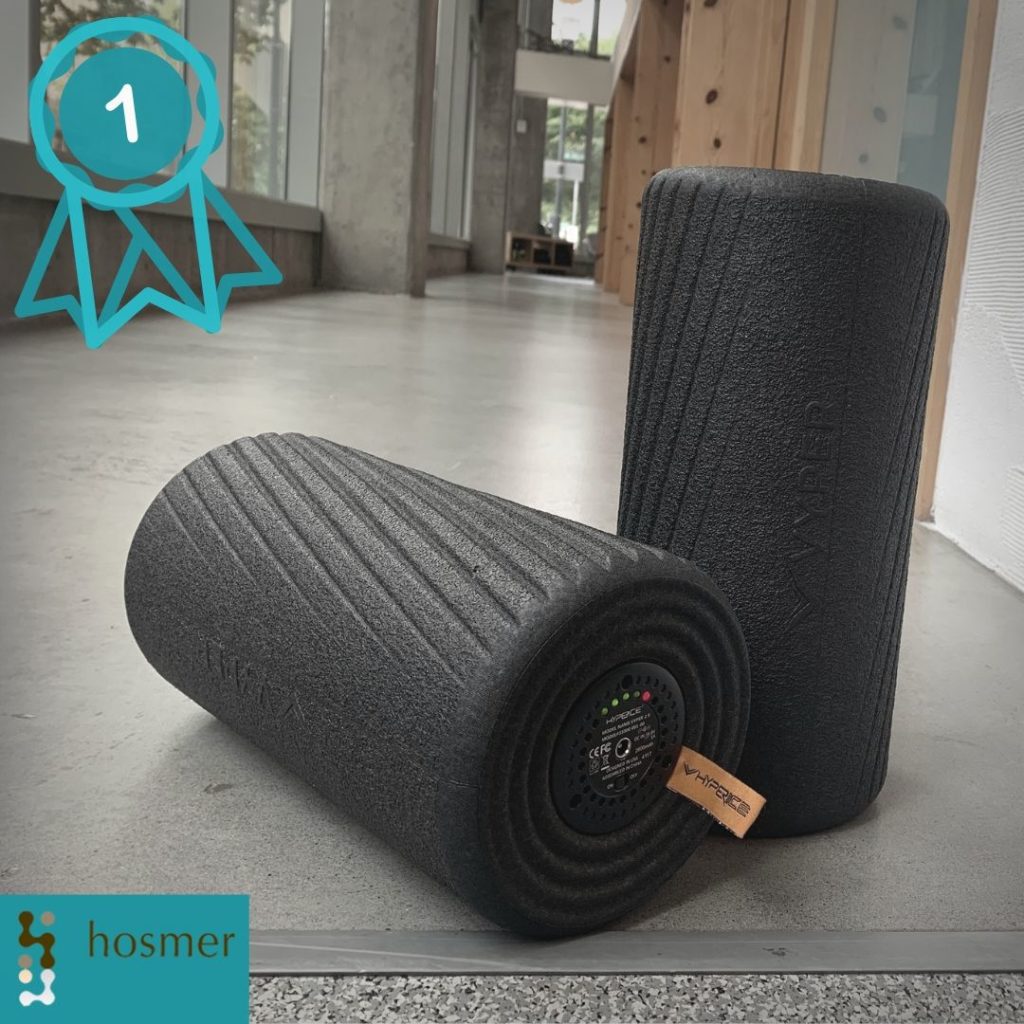
When it comes to foam rollers, the Vyper is the king of kings. It’s firm, it won’t lose its shape over time, but it doesn’t feel as hard as, say, the M80 foam roller. Plus, the vibrating ability does a lot of things that a non-vibrating foam roller can’t. First, and probably the most important, is that vibrations disrupt our pain signals. Let’s face it, on a pain scale of 1 to 10, 1 being nothing and 10 being the worst of the worst, foam rolling your lateral thigh is like a 13 or a 14. The vibrations may not take away the pain completely, but it does take the edge off. This leads to tight muscles relaxing faster, and adhesions resolving quicker. Plus, the vibrations can get in deeper than the superficial pressure of a traditional foam roller.
Now, the Vyper is expensive, even as far as vibrating foam rollers go. Why do we like this one as opposed to other brands, which may be almost half the price? Basically they do not have the same vibrational strength as The Vyper. The Vyper also has 3 different levels of vibration intensity, and we have not found another vibrating foam roller that can match its power.
PROS: Excellent for SI foam roller, and everything else. Vibrations reduce the time needed to do any mobilization, and also make it less painful. It’s durable. We have been using the most recent version (2.0) frequently in the clinic for 2 years now, and they show no signs of wearing down, breaking down, or lack of ability to hold a charge.
CONS: The price. Coming in at $200, it can be a bit spendy. However, the money you may save on massages and treatment could easily pay for itself.
HOSEMER APPROVED? Not only do we approved of it, it is our #1 choice of foam roller.
THE HARDEST OF THE HARD
Honorable mention goes to….
THE BOOM STICK AND THE PAIN PILL from KABUKI STRENGTH:
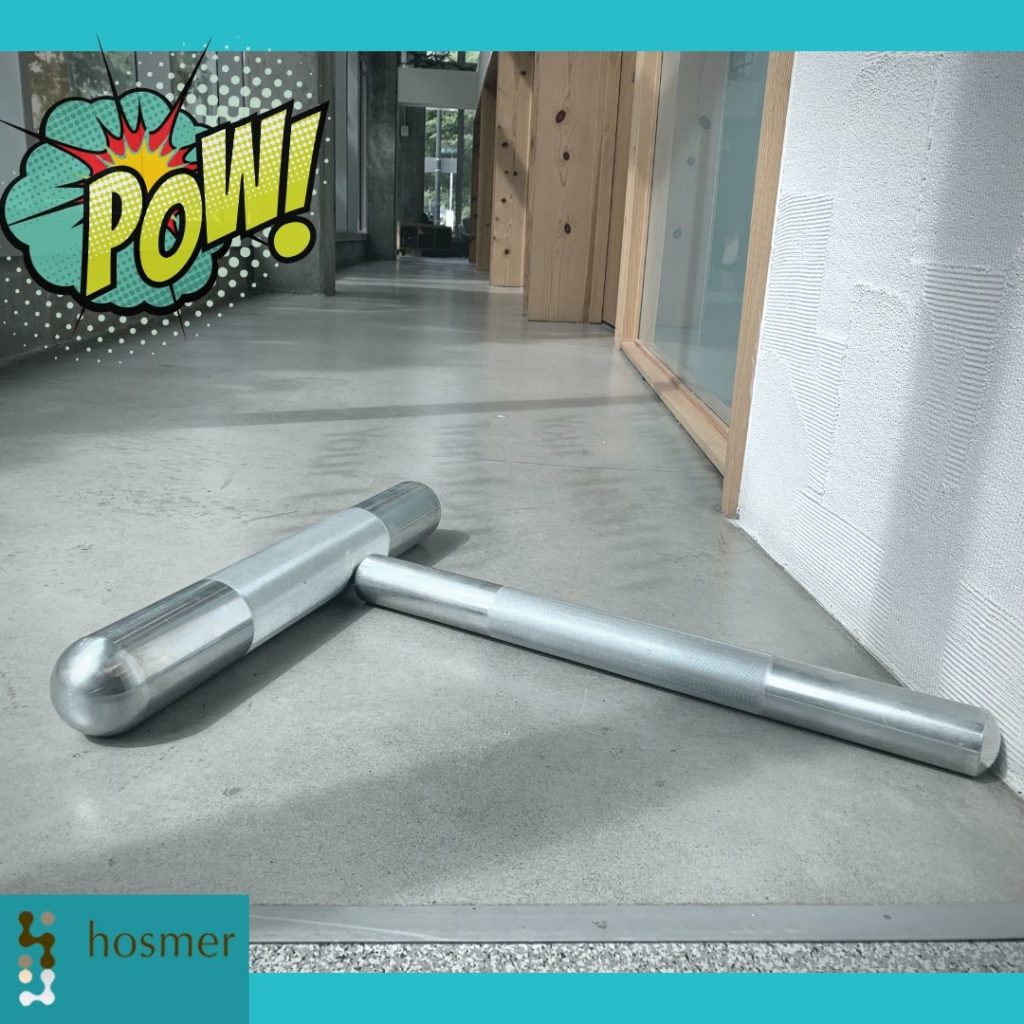
“Wait, you guys said foam rollers, not solid metal bars with OH MY LORD is that knurling in the middle?” Ok, Ok, you’re right. These are far from foam, but they can be used in a similar way, if you know what to do with them. However, these are very powerful tools, and the more powerful something is, the more careful you have to be with it. Even then, it is very possible to injure yourself. We suggest anyone who does get one, make sure you are trained in how to use them (which is outside the scope of this article, but https://store.kabukistrength.net/products/pain-pill does have some videos showing how to use this). We did not rank these because they are only for a small percentage of the population.
The Boom Stick and The Pain Pill would be great for
- Upper level athletes who challenge themselves
- Have been exposed to many other deep tissue and self myofascial release modalities, which may no longer be effective.
If a novice were to jump on one of these and try to use it as a foam roller, they could hurt themselves.
PROS: excellent for muscle laden ladies and lords who need some extra heff to get to deep knots.
CONS: could cause tissue damage if done incorrectly. Expensive.
HOSMER APPROVED: only if you can lift a small car, and you have proper knowledge on how to use it. Would not recommend to be the only foam roller you use.
THE GATOR by RUMBLEROLLER
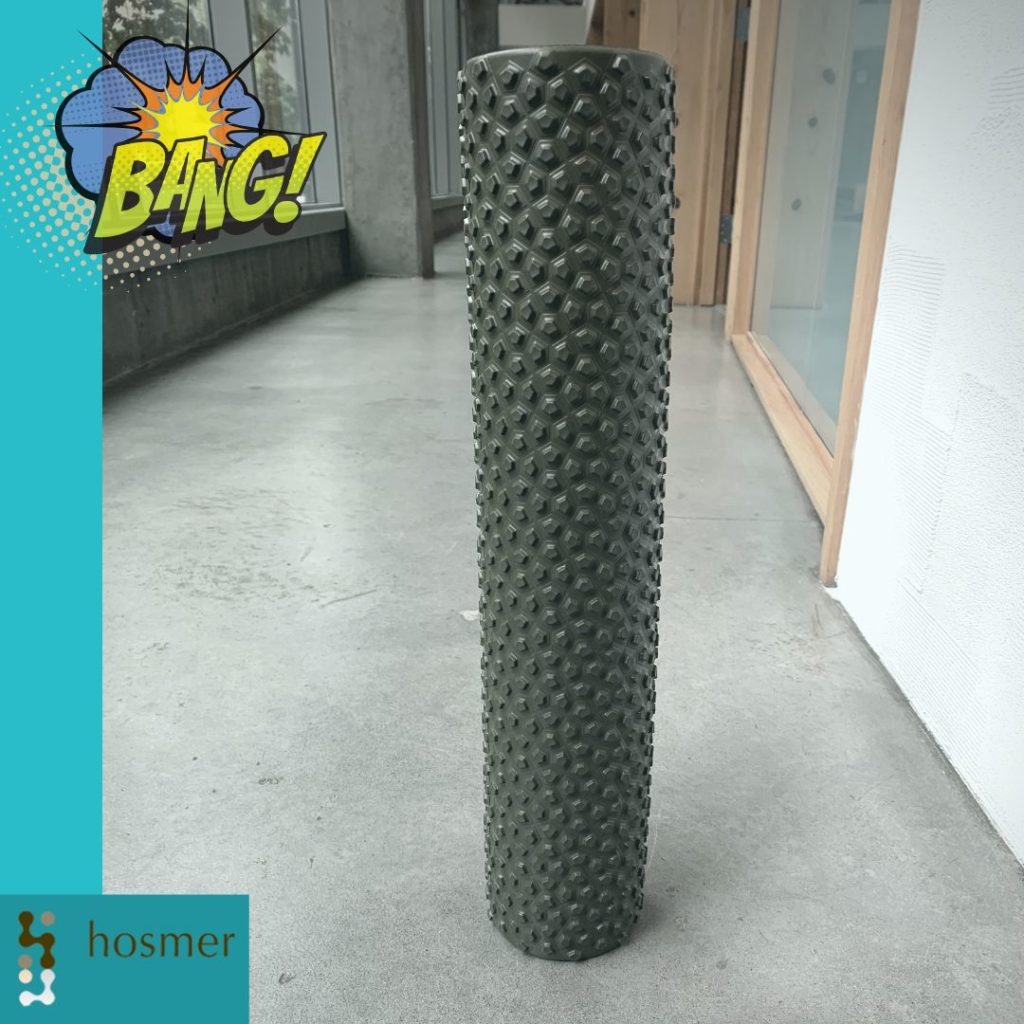
The Gator is a firm, textured foam roller, like rolling on Keith Richards face. Well, maybe not that textured, but you get the picture. The texture can help to gently grip your skin and provide a gentle sheer force, helping to release some tissue. The texture also can provide gentle acupressure. This has all the making of a great foam roller, except the texture would make it difficult to do an SI scan. So If you do decide on this one, you would want a M80 or a Vyper to go with it. This also was not ranked because it is a specialty foam roller, and should not be your sole foam roller.
PROS: firm, relaxing texture that is not too aggressive. Could be great for thoracic mobilizations, and the acupressure effect can be great.
CONS: texture makes getting a SI adjustment/scan difficult, some people may not like the acupressure/gentle sheer effect on tissue.
HOSMER APPROVED? Only if you have a M80 or a Vyper to go with it.
GIMMICK FOAM ROLLERS WE DO NOT RECOMMEND:
THE STUDDED FOAM ROLLER
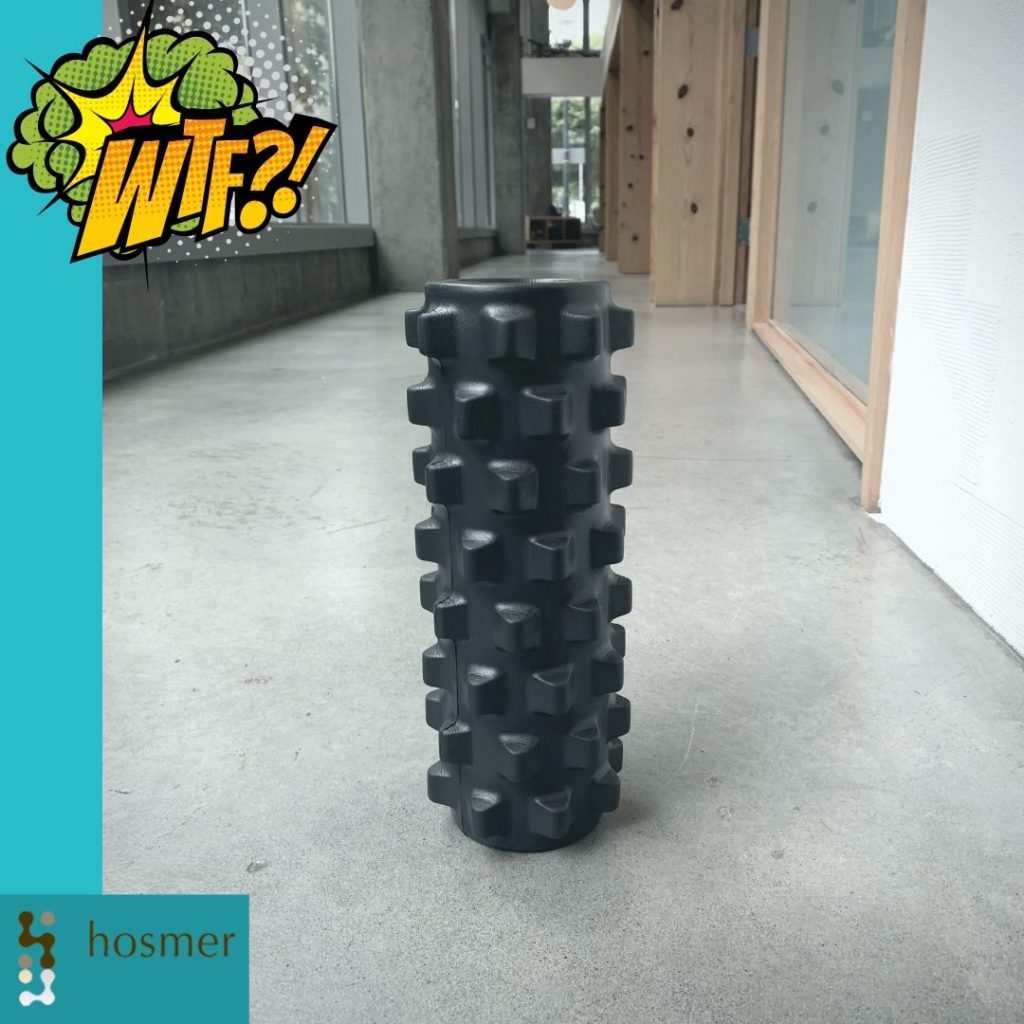
There are several companies that have released foam rollers like this. Their heart may be in the right place, but the results are not. According to Rogue’s website, these are designed to, “work like mimic thumb-like, deep tissue massage pressure,” but the problem is it is near impossible to get the damn thing in the right spot. You are much better off using a trigger point ball where you can directly target a specific spot. Plus, you are far more likely to hit a nerve or a rib when using a studded foam roller.
PROS: if the stars align, you just might target your trigger point
CONS: difficult to target, could injure another part of your body. Impossible to do SI foam rolling.
HOSMER APPROVED? Nope. This is something where the risk outweighs the benefit, and it’s not even the best way to target a specific trigger point.
In Conclusion
In a perfect world we would recommend the Vyper vibrating foam roller. If that is not in the budget, A M80 would be your next best choice, followed by the GRID X by TriggerPoint, or TriggerPoint’s traditional foam roller. Maybe you get the M80 and a Try to find the firmest foam roller that works for you. In the end, TriggerPoint foam roller? Remember, the best foam roller is the one that you use (provided it is not one that is going to cause damage like that weird studded foam roller). So there you have it! Hopefully this gives you a clear idea of what to look for and what to avoid. If you have any questions, you can always reach out to us here at the clinic. Thanks for reading, and be good to yourselves!